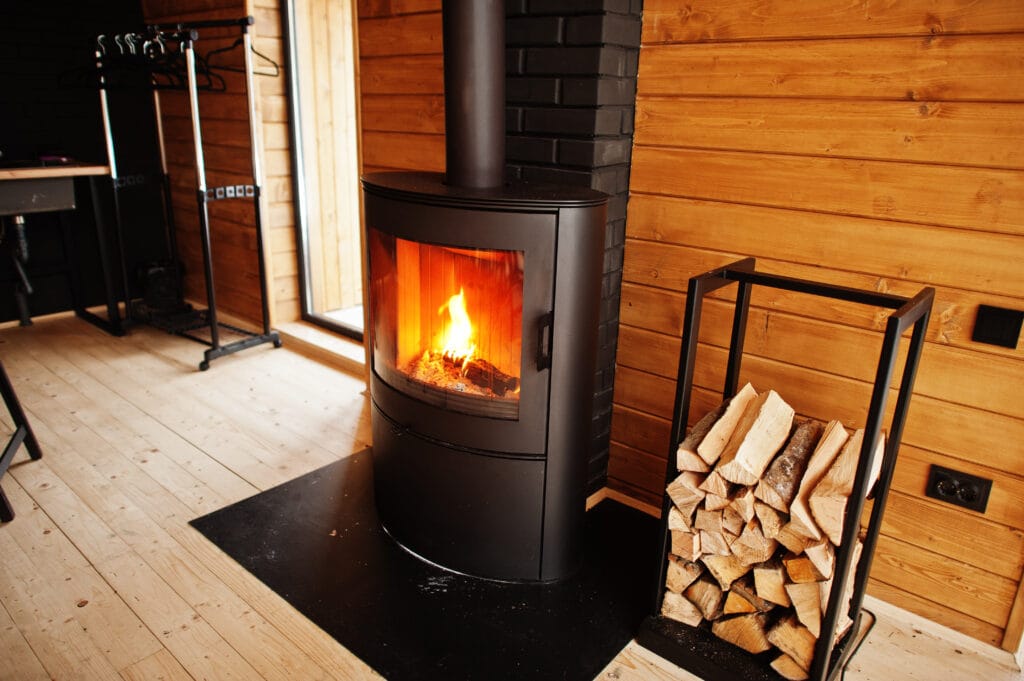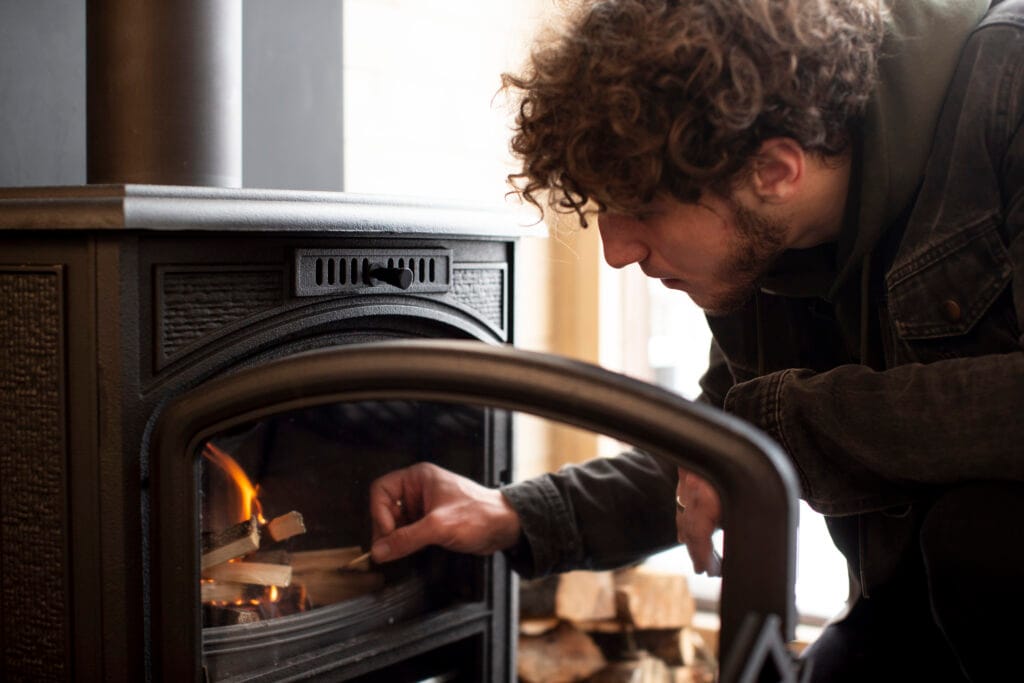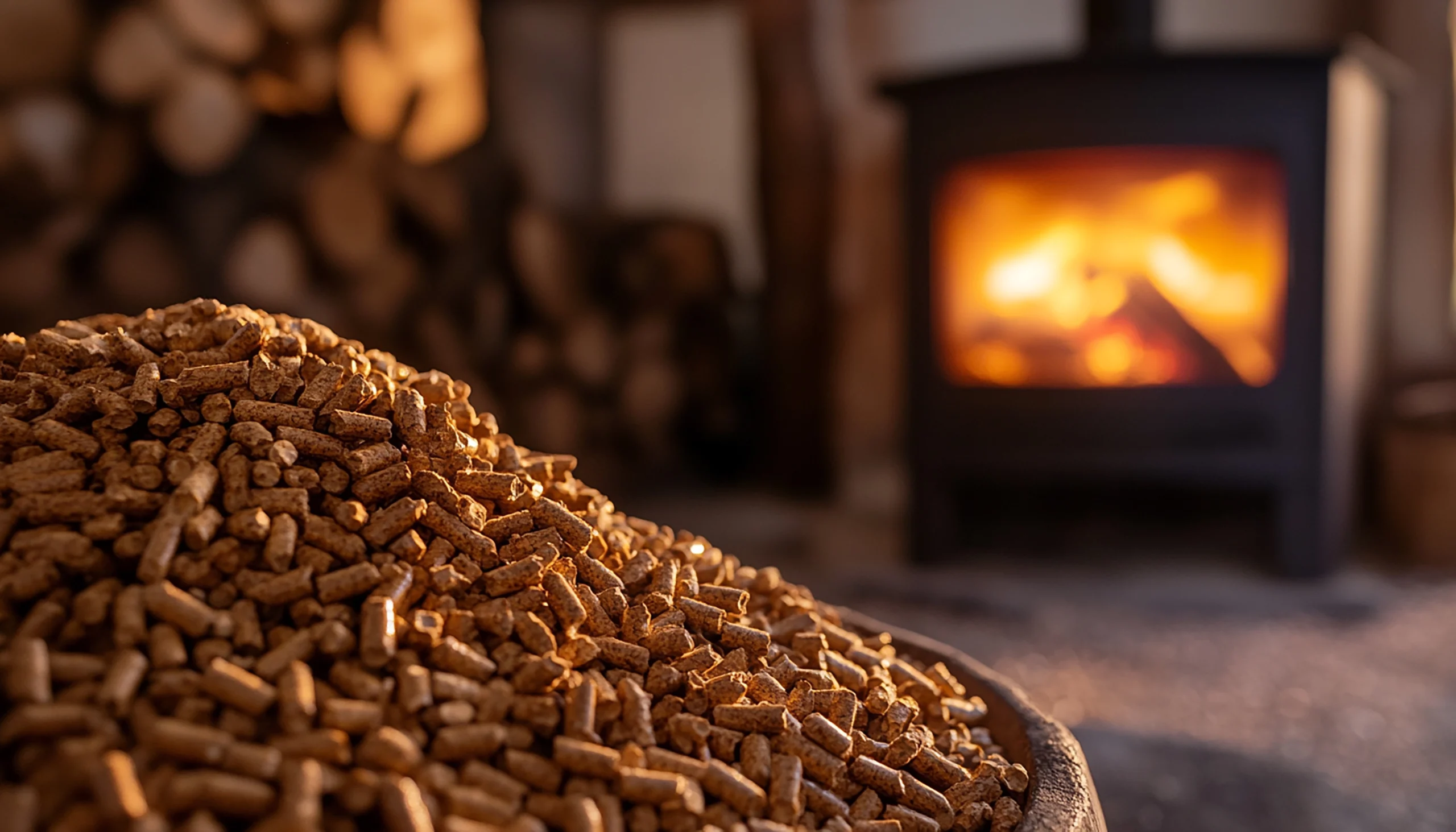How to Store Wood Pellets for a Pellet Stove
Upgrading your home with a modern wood pellet stove is a fantastic choice, giving you the best of both worlds: the comforting glow of a real wood fire and the effortless convenience of modern automation. But to get the most from your new, high-tech hearth, you need to treat its fuel with the respect it deserves.
Wood pellets are the heart of your renewable heating solution, a perfectly formed, ultra-low emission fuel designed for consistency and efficiency. However, their very nature—compacted organic material—makes them incredibly sensitive to moisture. Proper storage isn’t just about tidiness; it’s a crucial step that ensures your stove runs at peak performance, avoids costly damage, and keeps your home wonderfully warm all winter long.
In this guide, we’ll walk you through everything you need to know about storing your wood pellets like a pro. From the enemies of a good burn to the golden rules of storage and the best places to keep your fuel, we’ll make sure you’re ready for whatever the British weather throws your way.

Why Proper Storage is a Game-Changer
If you’ve ever held a bag of quality wood pellets, you’ll have noticed their dense, smooth feel. This is the result of immense pressure applied during the manufacturing process, which locks in the energy of the wood. It’s what makes them so efficient. But this density is also their Achilles’ heel when it comes to moisture. A dry pellet is a high-performance fuel; a damp one is little more than sawdust.
The Enemy of a Good Burn: Water
Water is the number one enemy of wood pellets. As soon as they come into direct contact with water, their structure breaks down, causing them to swell and crumble. This process, known as hydrolysis, turns your perfectly formed pellets into a soggy mess of sawdust, which cannot be used by your stove.
A pellet stove is designed to work with consistent, uniform fuel. Its internal auger system precisely feeds a measured amount of dry pellets into the combustion chamber. When you introduce water-damaged pellets, you risk everything from frustrating blockages and inefficient burns to major damage to the stove’s internal components. The auger can seize up, the feed system can clog, and the burner pot can become a sticky, sooty mess.
Protecting Your Investment
Your stove is a significant investment in your home’s comfort and sustainability. A high-quality, British-designed stove like the Island Pellet Stoves Lundy 5 or Ramsey is built to last, but its longevity depends on its fuel. Using moisture-damaged pellets voids your warranty and can lead to costly repairs. By taking a little time to store your pellets properly, you’re not just being a meticulous homeowner; you’re actively protecting the heart of your home’s heating system.
The Golden Rules of Wood Pellet Storage
Getting your storage strategy right is surprisingly simple. By following these three golden rules, you can ensure your wood pellets stay in perfect condition, ready to deliver that instant, comforting heat whenever you need it.
- Keep It Dry: This is the most important rule. Never store your bags of pellets directly on the ground, especially on a concrete floor in a garage or shed. Concrete is porous and can draw moisture from the earth. A simple wooden pallet or a few planks of timber will keep your bags elevated and safe.
Also, don’t lean the bags against an external wall where condensation can form or rain can run down, always leave an air gap to the wall. - Keep It Off the Ground: As mentioned above, a wooden pallet is your best friend. But you should also consider this rule for how you transport the bags. Avoid leaving bags out in the rain or sitting in a puddle. The moisture will wick up through the packaging and ruin the pellets inside.
- Mind the Temperature Fluctuations: Rapid changes in temperature can cause condensation to form inside a bag of pellets. If you’re moving bags from a cold outdoor space to a warm garage, it’s best to let them acclimate for a few hours before opening them.

Where to Store Your Wood Pellets
Choosing the right location for your wood pellets is all about balancing convenience with protection. Here are some of the most common options and what to consider for each.
Indoor Storage Solutions (Small-scale)
If you’re only buying a few bags at a time, indoor storage is an excellent option (behind the sofa !).
- The Garage: A garage is a popular choice, as it’s typically close to the house and out of the elements. However, remember to keep your pellets elevated on a pallet and away from the walls..
- The Utility Room or Porch: For those with limited space, a dedicated, airtight container in a utility room or on a covered porch is perfect for a few bags. You can easily access them without having to venture outside, which is a big bonus on a cold day!
Outdoor Storage Solutions (Large-scale)
For homeowners who buy in bulk to save money, a larger, more robust outdoor storage solution is a must.
- A Shed or Outhouse: A dedicated shed provides a great solution. Just ensure it’s well-ventilated to prevent condensation build-up, and again, use pallets to keep the pellets off the floor. You can even consider building a simple raised wooden platform inside the shed.
- A Dedicated Bunker or Silo: For very large quantities, a purpose-built storage bunker or silo is the ideal solution. These are typically designed with moisture protection in mind and can be fitted with an auger system for easy transfer to the stove. This is a brilliant option for those with a boiler-style stove like the [Link to Lundy 8 page] which can provide heating for your whole home.
Top Tips for Maximising Your Storage
Getting the basics right is essential, but a few extra steps can turn your storage from good to great. Here are some tips that can save you time, effort, and money in the long run.
- Go for Quality: Always choose high-quality wood pellets from a reputable supplier. Look for certifications like ENplus A1, which guarantees the pellets meet strict standards for moisture content, ash, and calorific value. The Biomass Heat Works website has a great guide on what to look for when buying pellets. [Link to external source 1: Biomass Heat Works]
- Stock Up Before Winter: Buying in the autumn will help you avoid the inevitable price hikes and shortages that can occur in the depths of winter. Plus, your pellets will have had time to settle into their storage space before the coldest weather hits.
- Use the Oldest First: It’s good practice to rotate your stock. Use the oldest bags of pellets first to ensure no bag is sitting around for too long. This helps maintain freshness and quality.
- Check Your Bags: Before storing, give each bag a quick inspection. Look for any tears or rips in the packaging that could have exposed the pellets to moisture. If a bag feels soft or has clumps, it may already be compromised.
The Island Pellet Stoves Difference
When you invest in a stunning, UK-designed and manufactured stove from Island Pellet Stoves, you’re buying into a system that works in perfect harmony with quality wood pellets. Our patented designs are engineered for precision and reliability, giving you the comforting glow of a real wood fire without the mess or hard work of a traditional log burner.
Our award-winning renewable heating solutions are handcrafted in Britain with ultra-low emissions and a top-flue design, making them a seamless fit for any fireplace. Our customer reviews often speak of the incredible ease of use, with no need to constantly load logs or clean up messy ash. The Lundy 5, for example, is praised for its whisper-quiet operation and simple maintenance, which is a direct result of its sophisticated technology working with quality, dry fuel.
The balanced flue systems and top-flue design on our stoves resolve difficult installation issues and make our burners work exceptionally well with properly stored pellets. The sealed system draws air directly from outside, eliminating the need for a draughty air vent and keeping your home perfectly insulated. This design is also perfect for modern, airtight buildings like passive houses.
And of course, we make the entire process easy by offering installation as standard, ensuring a hassle-free transition to modern, green heating.
Final Thoughts
Taking the time to store your wood pellets properly is a small step that brings big rewards, ensuring your home stays warm, your stove stays healthy, and your heating stays efficient all season long. From preventing moisture damage to protecting your investment, a solid storage plan is an essential part of being a savvy homeowner.
If you’re ready to upgrade the heart of your home with a modern, green stove that offers the convenience of automation and the unmatched glow of a real wood fire, we’re here to help.Explore our range of UK-made, innovative wood pellet stoves today, and discover a smarter way to heat your home.

